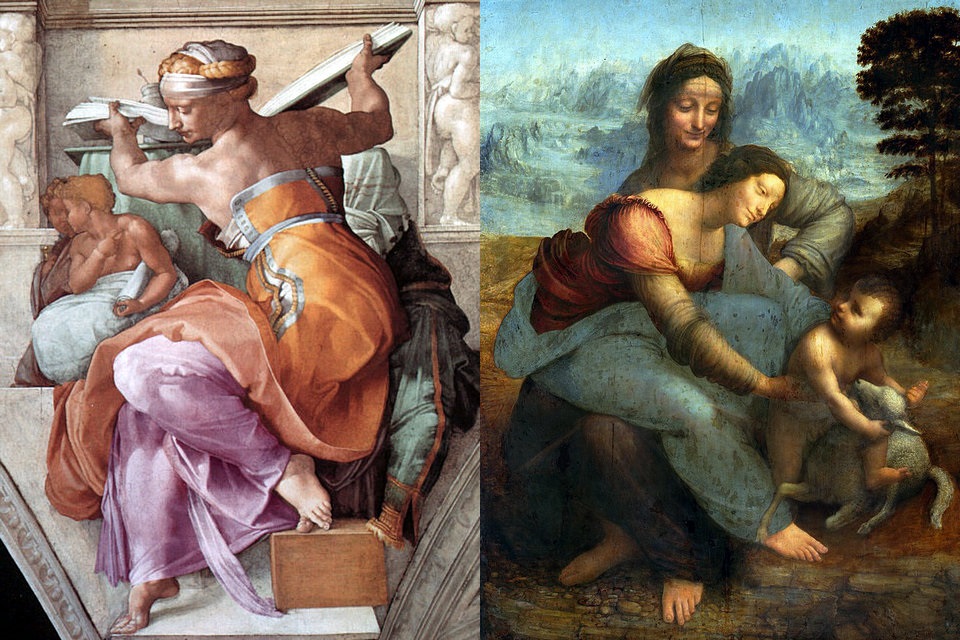Modern style (Maniera moderna) indicate the artistic production of the mature Renaissance, starting from the last decades of the fifteenth century, which resulted, in 1520, in Mannerism. The term was coined by Giorgio Vasari in the Lives of the most excellent painters, sculptors and architects, who in the final edition came out in 1568.
The Vasarian definition
Vasari divided his work in several parts, corresponding to a “progress of art”, which went from Cimabue, the first superstor of the “scabrosa clumsy and ordinary […] Greek way” (ie the Byzantine style ) and reaching the climax in Michelangelo Buonarroti, the supreme architect who had definitively passed the “ancient”.
The first part described the artists from Cimabue, in fact, to the artists of the international Gothic ; the second began with the pioneers of the Renaissance until the late fifteenth century, the artists of the “dry manner”; the third part explains the overcoming of the “second age”, characterized by the accent on the “difficulties” in perspective and on the “unpleasant views”, in favor of works of art satisfying in all respects, natural and harmonious, to which only the “motion and the breath” is missing.
The roots of the “modern way” were therefore the Florentine and Venetian experiences of the last decades of the fifteenth century, with a synthesis of the best that takes place in Milan, thanks to the contemporary presence of Leonardo and Bramante, who start a process of fruitful exchanges even with tradition local.
Development of the concept
The idea of a “progress” in the figurative arts is not a Vasarian invention anyway, but already surfaced in the Florentine environment of the first half of the fifteenth century, rediscovering the ideas of Pliny, Cicerone and Quintiliano. The basic idea was that, quite rooted in the approach to the history of art today, of a development from conventional and stylized representation techniques towards “mimesis”, ie an increasingly accurate and convincing imitation of nature, thanks a perfected mastery of artistic means.
Artists and writers, on the other hand, had already started a process of revaluation of their work: if in the Middle Ages artistic production was a “manual” (or “maccanic”) art, closely linked to the client’s wishes and to some verses similar to our concept of ” craftsmanship “, starting from the writings of Leon Battista Alberti, began a claim for the intellectual dignity of the creative process, based on theoretical principles (design, design ) that projected it in the field of liberal arts.
The artist now had to possess scientific and theoretical knowledge, which allowed him more and more often to perform a multi-purpose activity, from painting to sculpture or architecture, to military engineering or to the planning of parties, celebrations and scenographic apparatuses. Gradually the world of artists had approached that of the cultural elites of the clients: already in the fifteenth century we witness the transformation of the best artists into courtiers, capable of interacting equally with the most powerful, cultured and refined characters.
This improvement also occurred thanks to the best scientific knowledge
Protagonists
Vasari saw in Leonardo da Vinci, Michelangelo Buonarroti and Raphael the founders of the Modern Manner. Next to them the major artists of the period were Bramante, Fra Bartolomeo, Andrea del Sarto, Pontormo, Rosso Fiorentino, Correggio, Giorgione, Titian, Sebastiano del Piombo.
Diffusion
The diffusion of the modern manner marked the creation of a new common language for Italian art, which overshadowed the local variations of the Renaissance that had characterized the second half of the fifteenth century. The polycentrism of the courts and schools took over a strong hegemony of the major centers, such as Florence, Venice, Milan and, above all, Rome.
While the Italian primacy in the European artistic context was clearly outlined, the political and economic crisis triggered by the descent of Charles VIII of France broke the equilibrium of the peninsula, repeatedly scoring a diaspora of artists. But the most profound consequences, fueled by the radical disturbances of the events, were the definitive sunset of humanistic certainties, which had been the principal assumption of early Renaissance art.
The extreme development of modern Mannerism was Mannerism.
Source from Wikipedia
